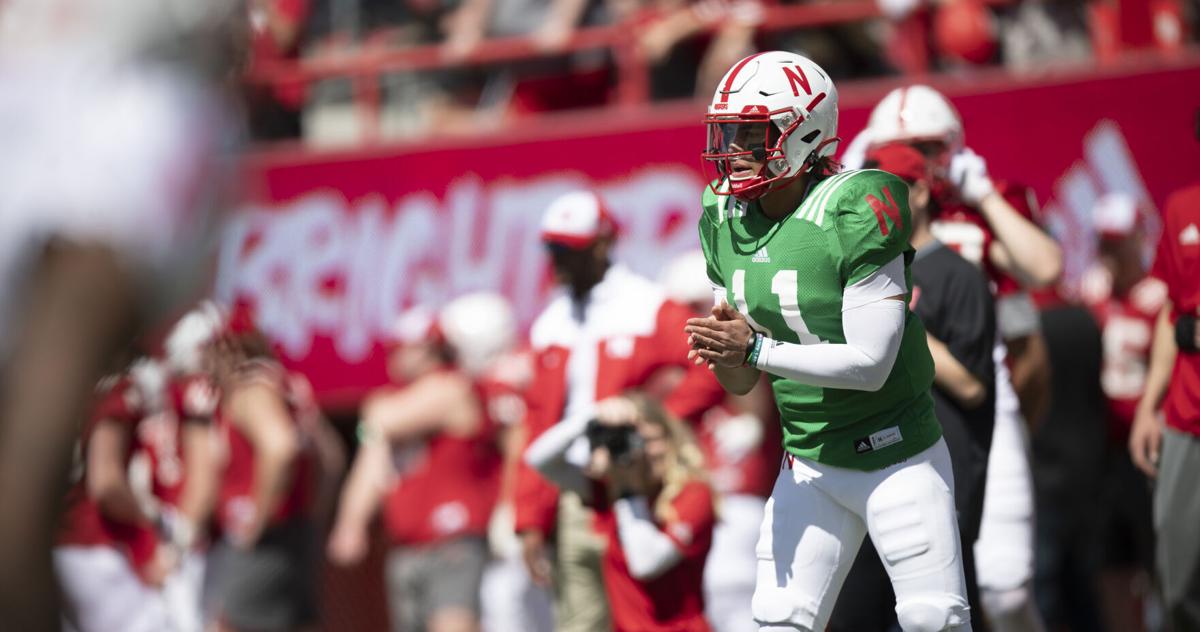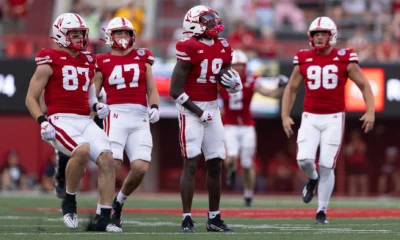
ERIC OLSON
The Associated Press
The first year of the athlete compensation era in college sports evolved into almost everything the NCAA didn’t want when it gave the green light last summer.
What was envisioned as a way for college athletes to make some pocket money based on their celebrity has turned into bidding wars for top recruits and transfers who can command millions for their services. State laws have been passed or overturned and funding in some cases is coming from deep-pocketed donors and alumni who have waded into the recruiting wars.
The current frenzy has given rise to serious concerns about recruiting practices and competitive balance and, in turn, questions about where NIL compensation — short for name, image and likeness — goes from here. Will Congress get involved? Will schools take on a primary role?
“The way this money situation is exploding on schools, they’re going to compete themselves into the ground,” University of Illinois labor law professor Michael LeRoy said. “They can’t all win under these rules.”
People are also reading…
Some would say there are no rules, or that rules set up by the NCAA and in-state laws have no teeth and are treated more like suggestions.
“When you see Nick Saban losing his cool over recruiting, it’s a sure sign that damage is being done at the highest levels of NCAA athletic competition,” LeRoy said, referring to the Alabama football coach’s comments in May alleging Texas A&M “bought every player on their team.”
The NCAA interim NIL policy says there is to be no pay for play, no recruiting inducements and that athletes must provide a service in exchange for pay. With the schools themselves left out of the loop in the wheeling and dealing, so-called booster collectives sprung up to provide earning opportunities — and, critics say, recruiting enticements.
Basketball player Nijel Pack made one of the first big splashes in April. When his transfer from Kansas State to Miami was announced, it was made public he would get a two-year, $800,000 deal with a medical tech company that came with a car. Pack already is featured in an advertisement.
There have been media reports of football and basketball recruits and transfers being promised millions of dollars in NIL deals — all against the rules because they haven’t enrolled.
The NCAA Division I Board of Governors in May warned that enforcement staff would investigate and take action against the most “outrageous violations,” with the schools being penalized for boosters’ improper conduct.
Dionne Koller, a professor and director of the Center for Sport and the Law at the University of Baltimore law school, said she’s not surprised how NIL has unfolded. The market, she said, was at a boiling point.
“Because we now let the genie out of the bottle,” she said, “this is what’s happening.”
Short of congressional action to sort out NIL issues, some wonder if athletes will be declared employees of their schools and have NIL issues addressed through collective bargaining.
Proponents say their position is strengthened by last fall’s memorandum from National Labor Relations Board general counsel Jennifer Abruzzo, who wrote college athletes fit the definition of “employees” under federal labor law: someone who performs services for an institution and is subject to its control.
Koller said she agrees there is a strong legal basis for calling athletes employees.
“Whether we actually get to the point of collective bargaining, I’m still in wait-and-see mode because this is something that can be changed by statute,” she said. “The NLR Act can be amended to say college athletes can’t be considered employees. Whether Congress would do that, that’s a political question and something we have to keep in mind.”
LeRoy said there is nothing to prevent public schools from adopting collective bargaining or Congress from passing an industry-specific collective bargaining law, just as it did in 1926 with railroads and in 1936 with airlines.
Marc Edelman, a law professor at Baruch College in New York, said Abruzzo’s memo set the stage for unionization. The NCAA, on the losing end of court cases in antitrust lawsuits, has long opposed unionization and its newly redrawn constitution makes clear athletes cannot be paid by their schools for playing sports.
To be determined would be whether only athletes in revenue-producing sports would be included. There also would be Title IX implications with regard to how men’s and women’s interests are addressed.
LeRoy, who wrote the 2014 book “Collective Bargaining in Sports and Entertainment: Professional Skills and Business Strategies,” said now that athletes can make NIL money, maintaining a semblance of competitive balance should be the impetus for unionization.
Without it, LeRoy said, the five to 10 most well-heeled programs will sign elite, money-motivated recruits and further separate themselves from other programs.
“No league can win when you don’t have some kind of competitive balance in your rule system,” he said. “Rule No. 1 for a league is have anti-competitive rules in order to be competitive. That’s to say, they have to put restraints on a labor market in order to spread talent around and to make the league interesting from a fan standpoint.
“The way this is rapidly evolving, it’s going to accentuate the difference between the haves and the have-nots. I personally don’t see 65 Power Five teams hanging together in the same grouping under this current system.”
That topic is among the many under discussion as the NCAA’s three divisions restructure themselves, a process that picked up momentum last year.
LeRoy envisions the conferences as the “employers,” or “management,” in collective bargaining and key areas of negotiation being revenue sharing, a salary cap and creative ways to deal with NIL. He offered a couple of possibilities: backloaded NIL agreements requiring athletes to stay at a school three or four years before they collect their money, or setting an annual per-team limit on NIL earnings.
Tom McMillen, president and CEO of the LEAD1 Association, which represents top-tier athletic directors, suggests a less radical approach. He said athletic departments should oversee NIL activities to ensure compliance.
McMillen said expanded group licensing involving the schools and all athletes would more equitably distribute NIL money. Because schools that receive federal aid must comply with Title IX, male and female athletes would have equal opportunities to cash in.
“The athletic department already arranges internships, jobs, academic tutors — they play a super role in these kids’ lives,” McMillen said. “You could have a licensing division focused on the kids run by the athletic department. It’s going to be compliant and they’re going to do it the right way.”
Another option, McMillen said, would be a compromise to unionization where Congress would set up a new social contract for basketball and football players that could involve some form of bargaining, but not collective bargaining as outlined by federal law.
“Our ADs our very concerned, 97%, about going full throttle to the professional model,” he said. “They would love to see college sports preserved and it has to be preserved, obviously, in a way that if coaches are making millions of dollars, student-athletes are going to have to have a chance to make more.”
The 2022 Nebraska football schedule
Northwestern Wildcats

When: 11:30 a.m., Aug. 27
Where: Dublin, Ireland
2021 record: 3-9, 1-8 Big Ten
Nebraska’s record against: 9-6
Last meeting: Nebraska won 56-7 (Oct. 2, 2021)
North Dakota Fighting Hawks

When: 2:30 p.m., Sept. 3
Where: Lincoln, Nebraska
2021 record: 5-6, 3-5 Missouri Valley
Nebraska’s record against: 1-0
Last meeting: Nebraska won 33-0 (Sept. 23, 1961)
Georgia Southern Eagles

When: 6:30 p.m., Sept. 10
Where: Lincoln, Nebraska
2021 record: 3-9, 2-6 Sun Belt
Nebraska’s record against: Never played
Oklahoma Sooners

When: 11 a.m., Sept. 17
Where: Lincoln, Nebraska
2021 record: 10-2, 7-2 Big 12
Nebraska’s record against: 38-46-3
Last meeting: Oklahoma won 23-16 (Sept. 18, 2021)
Indiana Hoosiers

When: 6 or 6:30 p.m., Oct. 1
Where: Lincoln, Nebraska
2021 record: 2-10, 0-9 Big Ten
Nebraska’s record against: 8-10-3
Last meeting: Indiana won 38-31 (Oct. 26, 2019)
Rutgers Scarlet Knights

When: 6 p.m., Oct. 7
Where: Piscataway, New Jersey
2021 record: 5-7, 2-7 Big Ten
Nebraska’s record against: 5-0
Last meeting: Nebraska won 28-21 (Sept. 18, 2020)
Purdue Boilermakers

When: Oct. 15
Where: West Lafayette, Indiana
2021 record: 8-4, 6-3 Big Ten
Nebraska’s record against: 5-5
Last meeting: Purdue won 28-23 (Oct. 30, 2021)
Illinois Fighting Illini

When: Oct. 29
Where: Lincoln, Nebraska
2021 record: 5-7, 4-5 Big Ten
Nebraska’s record against: 13-5-1
Last meeting: Illinois won 30-22 (Aug. 28, 2021)
Minnesota Golden Gophers

When: Nov. 5
Where: Lincoln, Nebraska
2021 record: 8-4, 6-3 Big Ten
Nebraska’s record against: 25-35-2
Last meeting: Minnesota won 30-23 (Oct. 16, 2021)
Michigan Wolverines

When: Nov. 12
Where: Ann Arbor, Michigan
2021 record: 11-1, 8-1 Big Ten
Nebraska’s record against: 4-6-1
Last meeting: Michigan won 32-29 (Oct. 9, 2021)
Wisconsin Badgers

When: Nov. 19
Where: Lincoln, Nebraska
2021 record: 8-4, 6-3 Big Ten
Nebraska’s record against: 4-11
Last meeting: Wisconsin won 35-28 (Nov. 20, 2021)
Iowa Hawkeyes

When: 3 p.m., Nov. 25
Where: Iowa City, Iowa
2021 record: 10-2, 7-2 Big Ten
Nebraska’s record against: 29-20-3
Last meeting: Iowa won 28-21 (Nov. 26, 2021)

Must See
-


Football
/ 5 months agoHuskers Fight Hard but Fall Short Against UCLA
LINCOLN – The Nebraska Cornhuskers gave it their all on Saturday, with standout efforts...
-


Football
/ 5 months agoGAMEDAY: Nebraska Set to Face Undefeated Indiana in Key Big Ten Showdown
Bloomington, IN – It’s Game Day, Husker Nation! Nebraska (5-1, 2-1 Big Ten) returns...
-


Football
/ 6 months agoBlackshirts Shine as Nebraska Tops Rutgers 14-7 on Homecoming
Lincoln, NE – Nebraska’s Blackshirt defense played a starring role in the Huskers’ 14-7...
By Chris














You must be logged in to post a comment Login